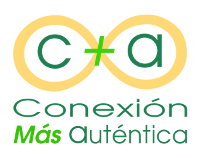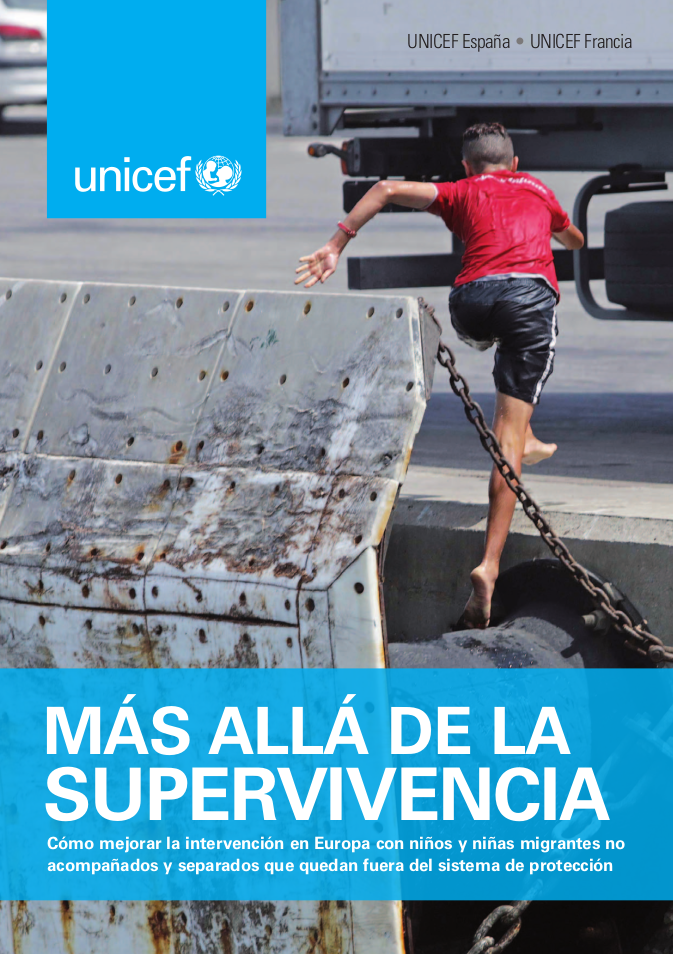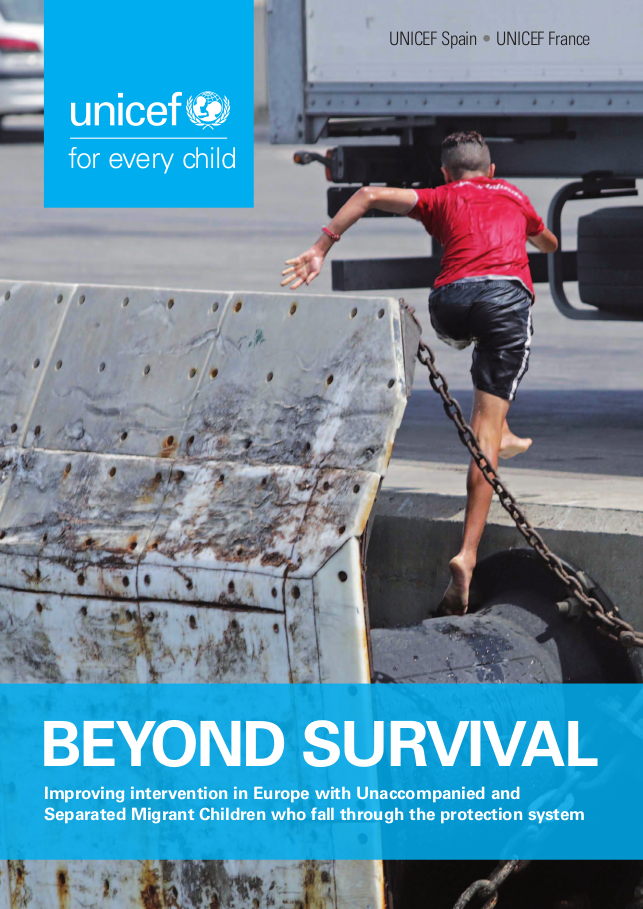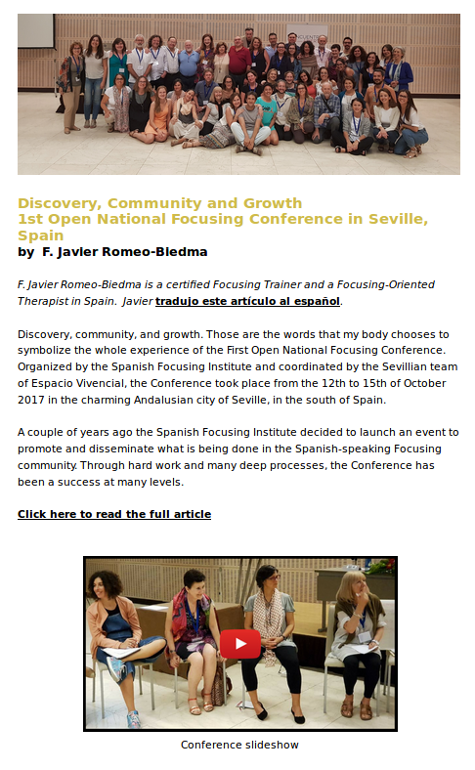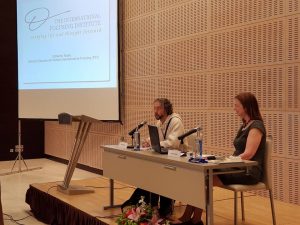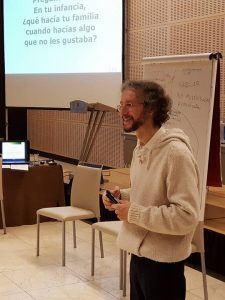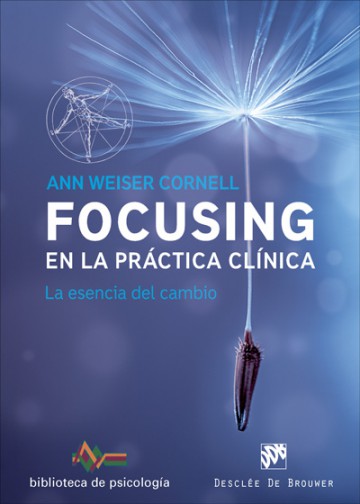Label: Agenda actual
Manual “See to Protect. Keys to understanding violence against children, girls and adolescents and to develop effective protection measures”, F. Javier Romeo and Pepa Horno for UNICEF Spain
3 May 2022.
Tags: Agenda actual, Education, CI Spirals, Training, My Classifieds, child protection, Psychotherapy, Therapy, Trauma
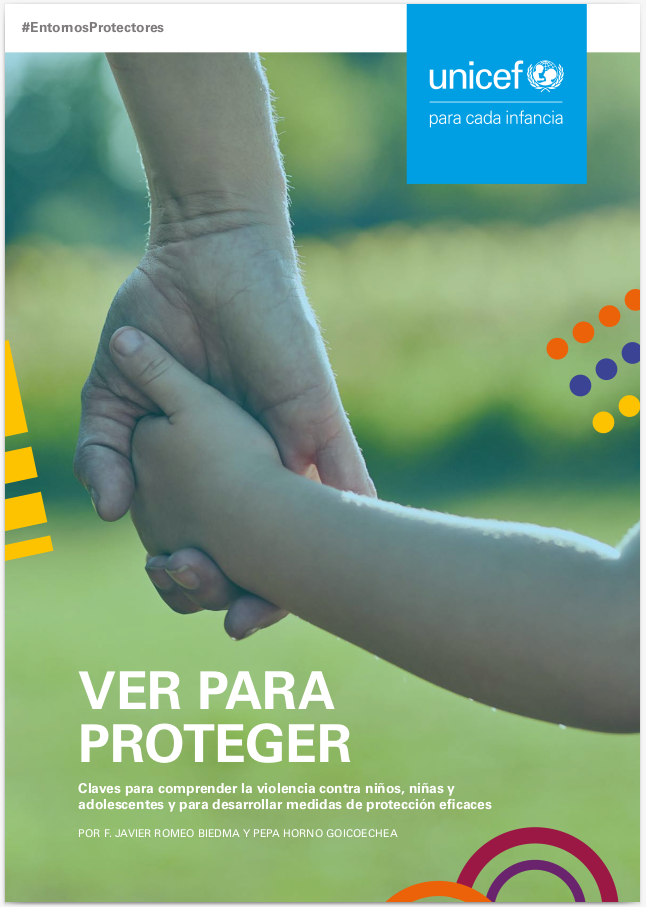 Last week the manual was officially presented see to protect. Keys to understanding violence against children, girls and adolescents and to develop effective protection measures, that we have elaborated my partner Pepa Horno and I from Spiral Consulting Children for UNICEF Spain. As usual with My publications, sector la manual entry see to protect on that blog and expand on some relevant aspects here.
Last week the manual was officially presented see to protect. Keys to understanding violence against children, girls and adolescents and to develop effective protection measures, that we have elaborated my partner Pepa Horno and I from Spiral Consulting Children for UNICEF Spain. As usual with My publications, sector la manual entry see to protect on that blog and expand on some relevant aspects here.
The manual has three elements that are significant to share here.
First, broadly systematizes the fundamental concepts to understand violence. Many people going through therapy need to understand what has happened to them and how, and although normally the accompaniment process is enough, sometimes they ask me for a reference to continue expanding. It's manual, although it is technical and is aimed at professionals who work with children, and adolescents, can also serve people with sufficient therapeutic work.
On the other hand, and expanding on that line, the manual is also useful for psychotherapists who want to update their knowledge and skills. With the activities that are proposed throughout each of the chapters we can expand our sensitivity and our ability to accompany processes that have to do with violence and trauma and with their healing.. The practical part is designed to cultivate awareness of our interventions.
By last, it is essential to remember the importance of the bodily dimension both in violence and its consequences (especially in trauma and dissociation) as in recovery. The entire manual has body aspects, and especially works on the feeling of well-being that it tries to build in the spaces that are Safe and Protective Environments.
The manual see to protect can be downloaded free of charge from the UNICEF Spain website.
I hope that is of interest, and I will love to know how you receive it.
Guide “Voices for change. Methodological guide for consulting children, girls and adolescents in residential care”, by Pepa Horno and F. Javier Romeo, for UNICEF Spain
7 October 2021.
Tags: Agenda actual, Interpersonal communication, Education, CI Spirals, My Classifieds, child protection, Other Texts
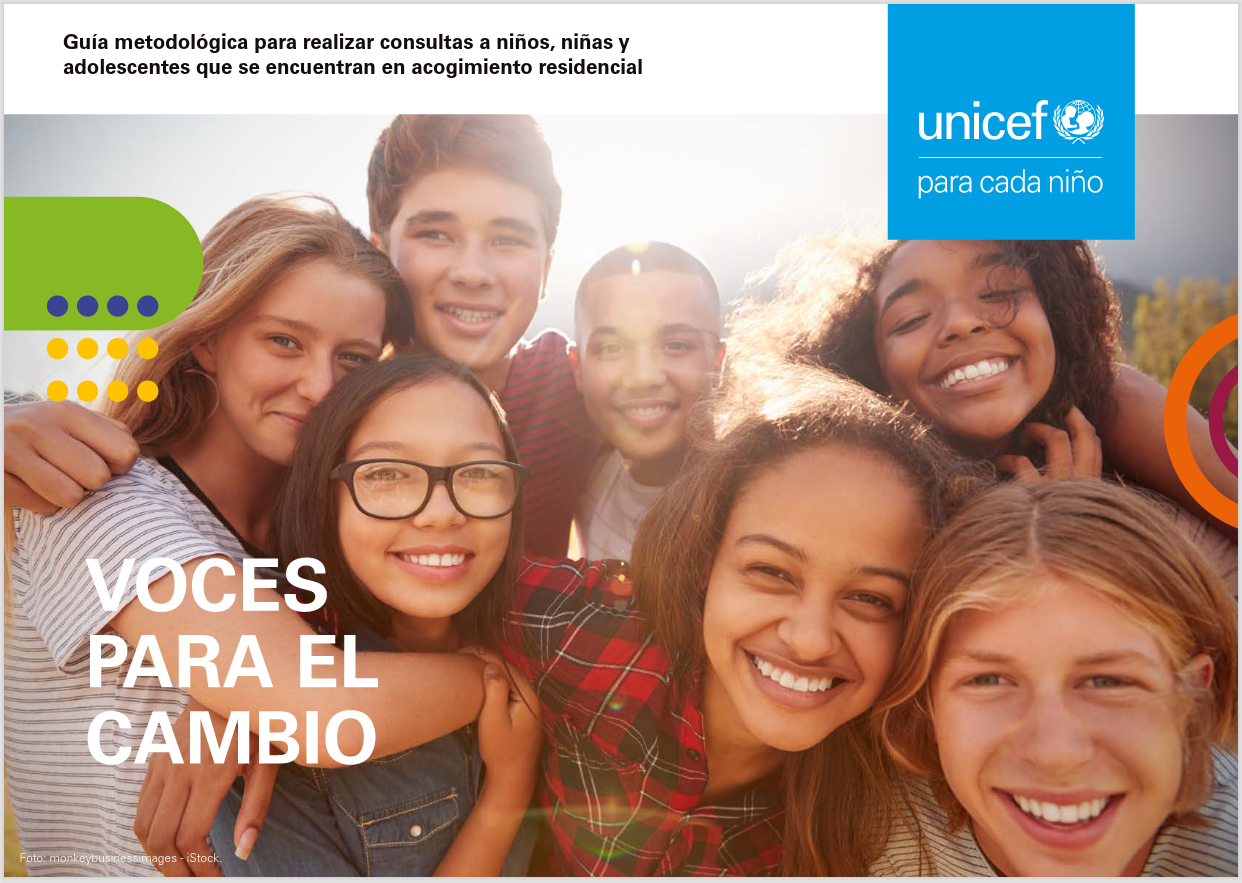 as usual, In this blog I share elements that cross my work in Spiral Consulting Children with other personal and professional interests. In this case I have the satisfaction of sharing the guide Voices for change. Methodological guide for consulting children, girls and adolescents in residential care, what we make Pepa Horno and I stop UNICEF Spain.
as usual, In this blog I share elements that cross my work in Spiral Consulting Children with other personal and professional interests. In this case I have the satisfaction of sharing the guide Voices for change. Methodological guide for consulting children, girls and adolescents in residential care, what we make Pepa Horno and I stop UNICEF Spain.
It was a satisfaction to receive the commission to systematize this methodology in writing in an affordable way.. Part of our work when accompanying public and private entities of protection systems here in Spain and in other countries in their improvement processes consists of having the eyes of their protagonists: children, girls and adolescents living in protection centers. And they are specialists in their own lives, and often the institutions forget to ask them, unfortunately.
That is why it is a great joy that UNICEF Spain, within its work in promoting child and youth participation, has invited us to present a simple methodology to consult these children, and adolescents. We talk more about it in the blog of Spiral Consulting for Children.
Inside it is a technical and practical guide, For me, the aspect of the interpersonal communication: how can we adults talk, how we can create the right space and how we can listen to children, and adolescents. The words we use can open communication or close it, That is why the formulas that we present are very clear.: respect, inclusion and protagonism of the children themselves, and adolescents.
And we have also insisted on flexibility and adaptation to all children, and adolescents, providing guidelines to accommodate the intervention to functional diversity, cultural diversity (especially the unaccompanied migrant boys and girls) and those with mental health issues and trauma. Their voices, as we say in the title, well heard, can make a change for the better in their lives.
I hope you like it and that you find it interesting.
Artículo “We accompany with the person that we are” within the initiative “Renewing from within”
15 September 2021.
Tags: Agenda actual, Interpersonal communication, Education, CI Spirals, Focusing, My Classifieds, For parents, Psychotherapy, Therapy, Experiences
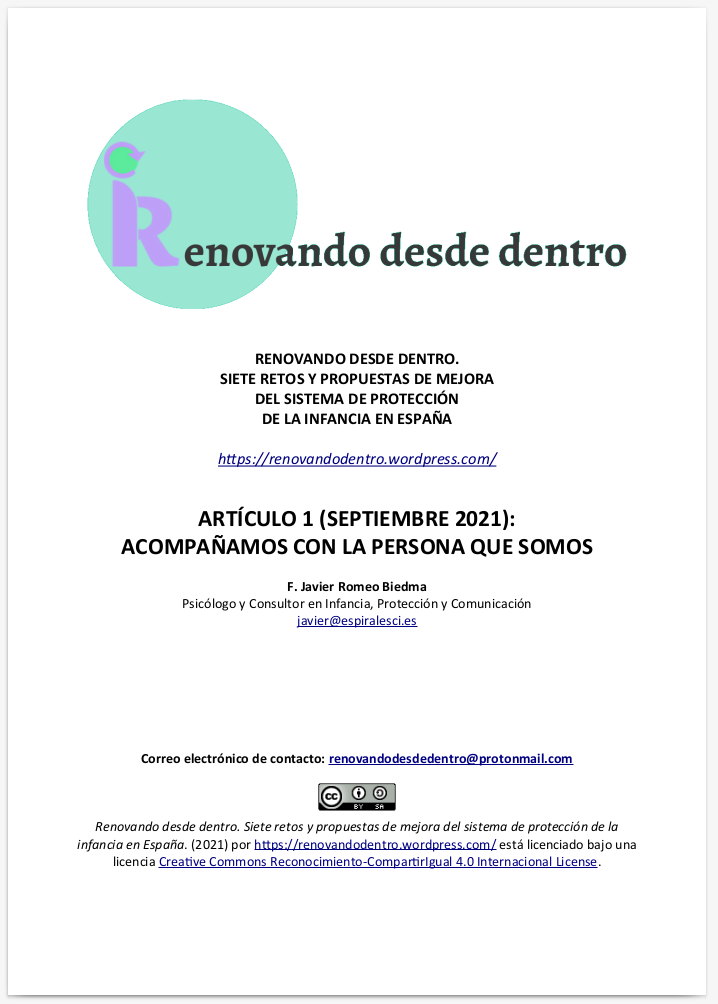 Part of my work as a psychologist and companion in personal and organizational processes consists of finding ways to communicate complex messages through metaphors and analogies.. In the initiative “Renewing from within”, that I already presented in this other post, we set out several challenges and proposals to improve the child protection system, girls and adolescents in Spain (And in the rest of the world).
Part of my work as a psychologist and companion in personal and organizational processes consists of finding ways to communicate complex messages through metaphors and analogies.. In the initiative “Renewing from within”, that I already presented in this other post, we set out several challenges and proposals to improve the child protection system, girls and adolescents in Spain (And in the rest of the world).
This month I have collaborated with the article “We accompany with the person that we are”, that uses analogies between the measures we are taking in the face of the pandemic and the aspects we need to take care of when accompanying children, girls and adolescents who have suffered a lot. It is a way of bringing awareness to our way of being and doing, both personally and professionally.
And you will see that, as usual, I insist on the importance of training in trauma and remember the value of Focusing, I find it a very useful tool on a day-to-day basis..
I would love to know what you think and how you live it.
A personal view on “Beyond survival. How to improve the intervention in Europe with unaccompanied and separated migrant children who remain outside the protection system ”, by F. Javier Romeo and Pepa Horno for UNICEF
20 October 2020.
Tags: Agenda actual, CI Spirals, Focusing, In English, My Classifieds, Other Texts, Experiences
[Click here to read this post in English.]
The document Beyond survival. How to improve intervention with unaccompanied and separated migrant children who are left outside the protection system, what Pepa Horno, my partner in Childhood Consulting Spirals, and I have written for UNICEF Spain and UNICEF France, just posted, and is available in two versions:
- Download the original English version of Beyond Survival. Improving intervention in Europe with Unaccompanied and Separated Migrant Children who fall through the protection system.
- Download the Spanish translation, Beyond survival. How to improve intervention with unaccompanied and separated migrant children who are left outside the protection system.
This is a technical publication that has to do with Child Protection, social intervention and human rights. In fact, We have the ideas and conscience of about a hundred professionals in the International Workshop in December 2019 en Madrid, that I helped facilitate (we explain more in our CI Spirals blog post). However, it is also a very personal document for me.
On the one hand, children, Unaccompanied and separated migrant girls and adolescents have a very special place in my heart. I worked in Morocco for several years with children, girls and adolescents living on the streets and I know the difficulties they have there, and what makes them risk their lives for the possibility of having a better future. I have also worked for several years in Madrid with adolescents at social risk, and many of them were migrant boys and girls with no family references, so I have accompanied their steps in the difficulties they encountered to build a good future in Spain. And to this day I still enjoy being able to speak with them in Moroccan Arabic, a language that I really like. I hope that this document helps professionals and also the general public to have a compassionate look towards these children., and adolescents, and to worry about their welfare. (You can read more about my career path on my LinkedIn profile).
On the other hand, currently this is a very sensitive issue, due to multiple factors. As lead editor, I have repeatedly used do Focusing as a process for structuring ideas and finding the right formulations. The keys to more protective narratives need to come from a consciousness firmly rooted in the body. Hope this brings clarity and also a deeper perspective to this whole topic, especially if the more intricate parts manage to be a little more explicit.
In conclusion, it has not only been a professional challenge, but also a very personal process. I hope you enjoy it.
A personal view on “Beyond Survival. Improving intervention in Europe with Unaccompanied and Separated Migrant Children who fall through the protection system”, by F. Javier Romeo and Pepa Horno for UNICEF
20 October 2020.
Tags: Agenda actual, CI Spirals, Focusing, In English, My Classifieds, Other Texts, Experiences
The document Beyond Survival. Improving intervention in Europe with Unaccompanied and Separated Migrant Children who fall through the protection system, that Pepa Horno, my colleague at Espirales Consultoría de Infancia, and me have written for UNICEF Spain and UNICEF France, has just been published, and it is available in two versions:
- Download the original version in English of Beyond Survival. Improving intervention in Europe with Unaccompanied and Separated Migrant Children who fall through the protection system.
- Download the translation into Spanish, Beyond survival. How to improve intervention with unaccompanied and separated migrant children who are left outside the protection system.
This is a technical publication that has to do with Child Protection, social intervention and human rights. In fact, we counted with the ideas and awareness of nearly a hundred professionals at an International Workshop in December 2019 in Madrid, that I co-facilitated (we explain more about it in our blog post in Espirales CI). However, it is also a very personal document for me.
On the one hand, Unaccompanied and Separated Migrant Children are very dear to me. I worked in Morocco for several years with children in street situation and I know of the difficulties there, what makes them risk their lives for the possibility of a better future. I also worked for several years in Madrid with at-risk youth, and many of them were unaccompanied migrant children, so I accompanied their steps in the difficulties of building a good future for themselves in Spain. And I still enjoy being able to speak with them in Moroccan Arabic, a language that I like very much. I hope that this document will help other professionals and the general public to have a compassionate regard to these children, and to care for their wellbeing. (More about my career path in my LinkedIn Profile).
On the other hand, this is currently a very sensitive issue, due to several factors. As main writer, I have used extensively Focusing with myself as a process to structure the ideas, and to find the adequate wording. The clues for more protective narratives need to come from an embodied awareness. I hope that this will bring clarity and also a deeper perspective to all this subject, with some of its intricacies made a bit more explicit.
In conclusion, it has been not only a professional challenge, but also a very personal process. I hope that you will enjoy it.
Report “Arrive on time. Children, girls and adolescents at risk in Spain” made by CI Spirals for SOS Children's Villages of Spain
1 October 2020.
Tags: Agenda actual, CI Spirals, My Classifieds
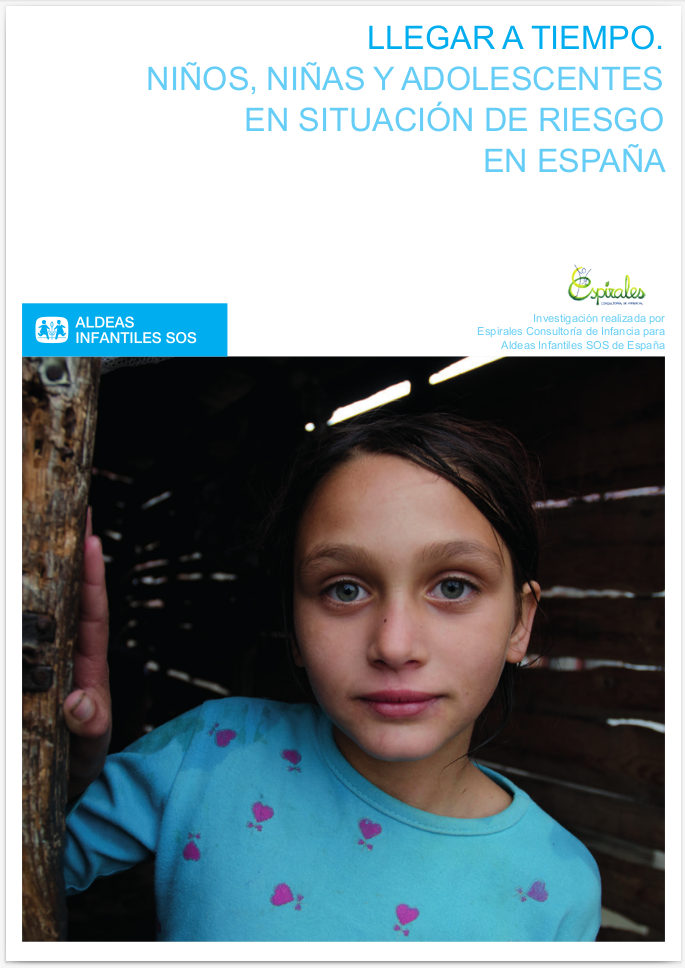 Last week the report was presented Arrive on time. Children, girls and adolescents at risk in Spain, which has been a satisfaction for me. Collect the results of the research we have carried out since Spiral Consulting Children in 2018 and 2019 for SOS Children's Villages of Spain. Although there is already one official blog entry for CI Spirals, I pick up the publications in which I also participate in this blog.
Last week the report was presented Arrive on time. Children, girls and adolescents at risk in Spain, which has been a satisfaction for me. Collect the results of the research we have carried out since Spiral Consulting Children in 2018 and 2019 for SOS Children's Villages of Spain. Although there is already one official blog entry for CI Spirals, I pick up the publications in which I also participate in this blog.
Two versions can be downloaded:
On a personal basis, I can say that taking care of the technical coordination of this research and carrying out the part that corresponded to me of data collection has brought me new learnings.
On the one hand, know new specific situations of child protection, and adolescents, risks they face and issues that need to be addressed.
For another, the importance of networking, seeing how municipalities that have internal coordination networks offer much better care to children, girls and adolescents who live in them and their families.
And third, the need to continue creating awareness in all the people involved:
- Municipalities and those responsible at the political level, so that they adequately prioritize a part of the population that, if not, has no resources other than what families can afford.
- Your professionals, especially in Social Services, so they can have a more conscious look at their work. In many cases with work overflow and lack of resources, but with a great commitment to the welfare of the population, a mindful look can help you better organize your care and resources, and to claim effectively what is necessary.
- The families, so that they can understand the difficulties and risks their sons and daughters face and can receive the help that is proposed to them.
- And children, and adolescents, so that they can be heard and given the prominence they deserve through the corresponding channels of participation.
And I end by thanking the entire research team for the collaborative work: Pepa Horno as general coordinator and Violeta Assiego, Itziar Fernandez, Golden Ferreres, Lourdes Juan and Santiago Míguez. It was an honor. And to Aldeas Infantiles SOS de España and its professionals for giving us this opportunity.
I hope that this investigation serves to shed light on all the work that we have pending to, as the title says, Arrive on time to take care of the children, girls and adolescents at risk.
Manual “Accompanying the wounds of the soul. Trauma in childhood and adolescence”
12 November 2019.
Tags: Agenda actual, Education, CI Spirals, Eugene Gendlin, My Classifieds, Psychotherapy, Therapy, Trauma
As a psychologist I divide my professional time between clinical practice accompanying people in their therapeutic process in Madrid and advice and training organizations related to the protection of children, and adolescents from Espirales Children Consulting. That's why I am pleased to present the manual Accompanying the wounds of the soul. Trauma in childhood and adolescence, I have prepared for the Regional Office of SOS Children's Villages in Latin America and the Caribbean.
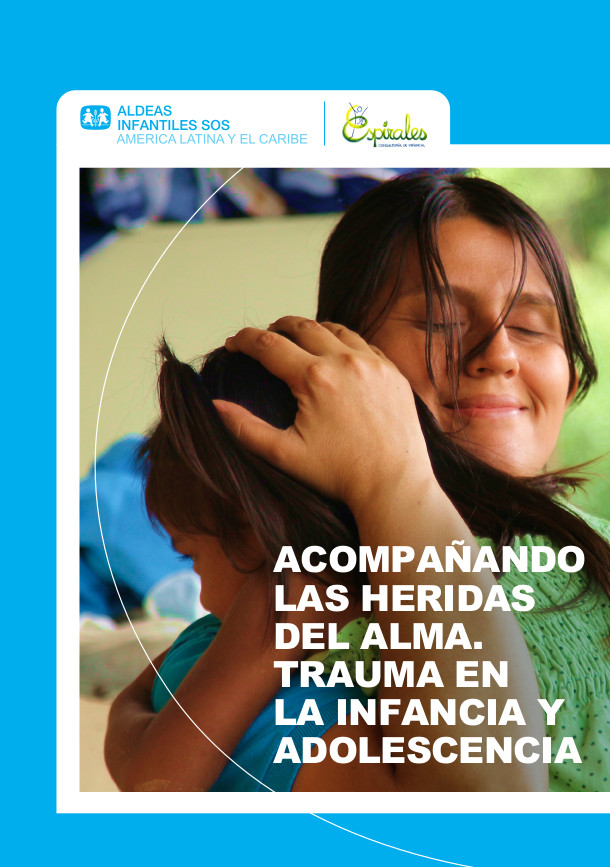 For more details on this publication, its contents and other publications related to child protection, you can read this blog entry Espirales CI.
For more details on this publication, its contents and other publications related to child protection, you can read this blog entry Espirales CI.
Two versions of the document:
- Accompanying the wounds of the soul. Trauma in childhood and adolescence, a single page (comfortable printer for printing and reading in mobile or tablet).
- Accompanying the wounds of the soul. Trauma in childhood and adolescence, a double page (to see on the big screen or for printing on printing).
In this blog I have only to add that the explanation of the trauma as a process is based on A process model (A Process Model) Eugene Gendlin de, and explanations of emotional blockages that have met the trainers and coordinators Focusing Ann Weiser Cornell and Barbara McGavin. You can find citations to specific sources on pages 16-20 of the text.
I hope the good results.
my article “Discovery, Community and growth” Focusing on the Open National Meeting in Seville 12 to the 15 October 2017
26 November 2017.
Tags: Agenda actual, Focusing community, Focusing, Focusing in Spain, Focusing international, In English, My Classifieds, Textos Focusing, Experiences
“Discovery, Community and growth. Those are the words you choose my body to symbolize the full experience of the First National Meeting Focusing Open. Organized by the Spanish Institute Focusing and coordinated by the Sevillian team Experiential Space, The meeting took place 12 to the 15 October in the charming Andalusian city of Seville, in the south of Spain”.
So begins my article in which I describe my experience for the In-Focus, the newsletter of the International Institute Focusing November 2017. In the space acotaron I have tried to reflect the international community for focusing the activities that we have shared in the First National Open Meeting Focusing, while I also wanted to reflect, in the tradition of Focusing and Experiential Philosophy, what has been my experience. From here I want to express my appreciation to Focusing Spanish Institute for convening this fantastic event, to the Experiential Space team led by Francisco Sivianes by coordinate and each speaker and each participant has made it possible, It has been an unforgettable experience.
- Read article “Discovery, Community and Growth. The 1st Open National Focusing Conference in Seville” in the original English version.
- Read the article translated into Spanish with the title “Discovery, Community and growth: the First National Open Focusing in Seville, Spain”.
I left for this blog more personal aspects, as I experienced the honor of Catherine Torpey able to present, who came to Seville to present the international dimension of International Focusing Institute (GIRLS) as Executive director of the same. For me, I collaborate with Committee Membership for more than a year ago, It is a satisfaction that community Focusing on Spain (also participants from other countries) you can see first hand to Catherine and all that makes the International Focusing Institute.
It was also a privilege to provide my workshop “Focusing and experiential work with violence”, in which I could share with people from five different nationalities some of the keys to use bodily sensations and focusing process to identify violence in a more complete and create security in our lives, an introductory version of my workshop “Focusing, body and safety: Focusing for the prevention of violence”.
There are many more memories, as each of the workshops I attended, or general conference, or the people I met (new or deeper)… You can see more about the environment of the different moments in the photographs taken by Francisco Sivianes (Focusing trainer and director of Experiential Space): of Thursday 12 October, of viernes 13 October and sábado 14 October of 2017.
This presentation is also available by Rosa Galiano with photos of his, Francisco Sivianes and others and published in the International YouTube channel Focusing Institute:
He has been an inspiration and I hope that also inspire you.
my article “Combining Focusing and Nonviolent Communication”, translated into Japanese: Intersection of the focusing and the non-violent communication
9 February 2017.
Tags: Agenda actual, CNV, Interpersonal communication, Focusing community, Focusing, Focusing international, In English, My Classifieds, Texts CNV, Textos Focusing
Text in Spanish – Japanese – Click here to read in English
Focusing International Conference in Cambridge (United Kingdom) in July 2016 continues to bear fruit.
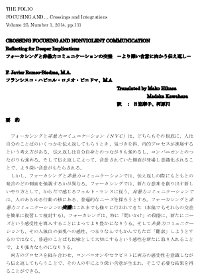 Today I have the honor to present the translation of my article “Combining Focusing and Nonviolent Communication. Reflecting deeper implications for” (appeared in 2014 in The Folio. A Journal for Focusing and Experiential Therapy) Japanese, with the suggestive title “Focusing and non-violent communication intersection of - towards the deeper implications tell-back -“.
Today I have the honor to present the translation of my article “Combining Focusing and Nonviolent Communication. Reflecting deeper implications for” (appeared in 2014 in The Folio. A Journal for Focusing and Experiential Therapy) Japanese, with the suggestive title “Focusing and non-violent communication intersection of - towards the deeper implications tell-back -“.
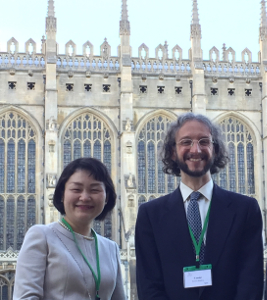
Con Madoka Kawahara (Kawahara circle).
Cambridge had the pleasure to meet Madoka Kawahara (Kawahara circle), Focusing training psychotherapist who had initiated the translation of the article a while back, already Mako Hikasa (Mako Hikasa), Focusing renowned Coordinator, which joined the project in its final phase translation. Our discussions from that meeting made the project proceed, and now there is this careful translation is available on the website Focusing Japanese Association (Japan Focusing Association), and I reproduce here with his permission.
From here I want to express my deep appreciation for their efforts and dedication (there have been many emails back and forth to clarify concepts and terms) so you can know this aspect of Focusing among many practitioners and professionals Focusing Japan.
In deep appreciation,
Cambridge 27th International Focusing Conference, which was held in (the UK)It is、It has brought a more abundant achievements。
 now、I、paper"Intersection of the focusing and the non-violent communication - deeper implications toward tell-back -"("Journal for focusing and experiencing therapy"The Folio. A Journal for Focusing and Experiential TherapyVol. 25, No. 1、2014I am honored to be posted on the year) has been translated into Japanese。
now、I、paper"Intersection of the focusing and the non-violent communication - deeper implications toward tell-back -"("Journal for focusing and experiencing therapy"The Folio. A Journal for Focusing and Experiential TherapyVol. 25, No. 1、2014I am honored to be posted on the year) has been translated into Japanese。

Madoka Kawahara
In Cambridge、Mr. counselor Madoka Kawahara undergoing focusing training Ya、There was a happy encounter with renowned certification focusing Coordinator Mako Hikasa。Because、And Ms. Madoka Kawahara is already working on this translation、And in the final stage of the project、Mako HikasaIt has been added。After the International Conference、Keep in touch us towards the translation completed、Then now、The exact Japanese translation has been completed。this is、Japan focusing association's Web siteYou can read in。Than the association、We received the authorization of the link posted。
To me is a certain enthusiasm and their interest effort、Deeply Thank you。In order to clarify the concepts and nuances、It was frequently exchanged e-mail。Many of certified Focusing trainers and practitioners of Japan、Because becomes an opportunity to get to know this aspect of focusing。
Gratitude
The International Focusing Conference 2016 in Cambridge (United Kingdom) keeps bringing more fruits.
 Now I have the honor of presenting my article “Crossing Focusing and Nonviolent Communication: Reflecting for Deeper Implications”, that appeared in The Folio. A Journal for Focusing and Experiential Therapy in 2014, translated into Japanese with the title “Focusing and non-violent communication intersection of - towards the deeper implications tell-back -“.
Now I have the honor of presenting my article “Crossing Focusing and Nonviolent Communication: Reflecting for Deeper Implications”, that appeared in The Folio. A Journal for Focusing and Experiential Therapy in 2014, translated into Japanese with the title “Focusing and non-violent communication intersection of - towards the deeper implications tell-back -“.

With Madoka Kawahara (Kawahara circle).
In Cambridge I had the pleasure of meeting Madoka Kawahara (Kawahara circle), a psychotherapist trained in Focusing who had already started the translation some time ago, and Mako Hikasa (Mako Hikasa), a renowned Focusing Coordinator that joined the project in its final stages. The conversations we had after that encounter have brought the work to its completion, and now we have this precise translation, that is available on the website of the Japan Focusing Association (Japan Focusing Association), reproduced here with permission.
I want to express my profound gratitude for their interest and hard work –there have been lots of e-mails to clarify concepts and nuances– to make possible that this aspect of Focusing might be known among the numerous Focusing professionals and practitioners in Japan.
In gratitude,
Manual “Focusing in clinical practice” de Ann Weiser Cornell (translated by F. Javier Romeo)
29 November 2016.
Tags: Agenda actual, Focusing, Focusing in Spain, Focusing international, My Classifieds, Psychotherapy, Therapy, Textos Focusing
It is a pleasure for me to share publishing Focusing in clinical practice. The essence of change, the last book Ann Weiser Cornell in Spanish, in this case translated by me.
In a carefully edited within the Psychology Library of Editorial Desclée, This book appears thanks to the joint work of many people, I thank you from here.
First, Ann Weiser Cornell He has been willing to publish the book (which first it appeared in the prestigious American publishing mental health W. W. Norton), and it has been in the translation every nuance, answering various questions and looking me the words tighter each of its concepts and expressions. He has contributed a warm prologue to the Spanish edition (which can be read in the promotional booklet), in which he says:
In this book I have tried to explain the Focusing simply but without losing the complexity that makes it so special. I tried to make this book very practical, so that the clinician can use immediately. (P. 18)
On the other hand, the urge Isabel Gascón, National Coordinator and my mentor Focusing Focusing, you have set the book, from coordinating with the publisher until complete review of the drafts and a presentation to the Spanish edition which it highlights the interest of this book in the Spanish-speaking world (also available in promotional booklet).
By last, It is appreciated the concern and care of the editorial team Desclée, who has worked for a clear and elegant book, in one of the most prestigious collections of psychology in Spain.
In future posts I will comment more aspects that I find this book useful. By the time I leave you with the index (which is extended here), I will comment on the various chapters in other blog entries:
- Introduction. A door opens.
- 1. The essence of change.
- 2. Prepare for the meeting: Entering Focusing sessions with clients.
- 3. Recognize and cultivate heartfelt feelings.
- 4. Help customers who felt sensations arise.
- 5. Cultivate the Self-en-customer presence: The essential environment for heartfelt feelings.
- 6. deepening: How to facilitate change sense.
- 7. When it costs us more to work with some difficulty customers.
- 8. Focusing en trauma, addictions and depression.
- 9. Focusing on integrating different therapeutic modalities.
- 10. Focusing therapist.
- Appendix.
For me it is a celebration that we can have this book so practical and yet profound, and I hope you enjoy reading it as much as I have enjoyed translating.
Note:
If you want to try Focusing session, or start therapy, I have my psychology consultation in Madrid, where I accompany children, adolescents and adults and will be happy to welcome you.
